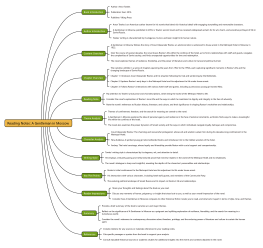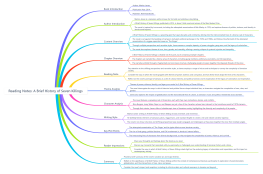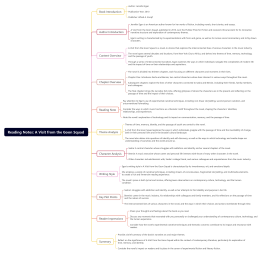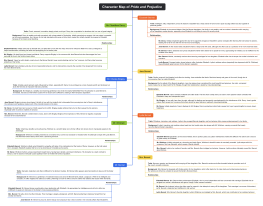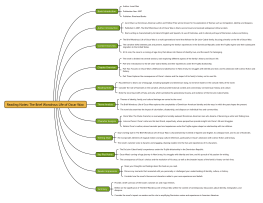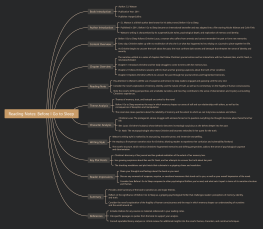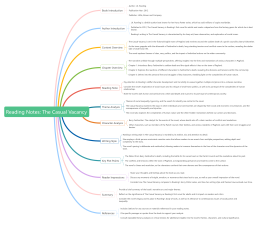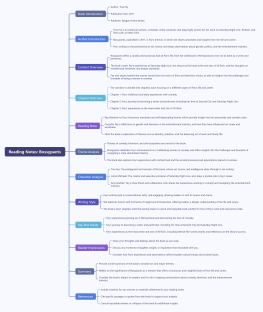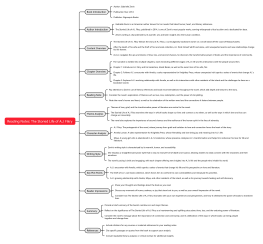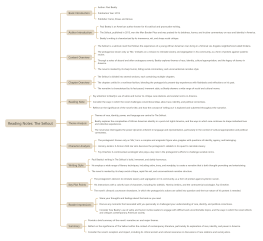Catcher in the Rye-J.D. Salinger: Book Summary
2024-07-19 15:46:14 351 0 Report 0
0
Login to view full content
This summary of 'The Catcher in the Rye' by J.D. Salinger offers a comprehensive overview of the novel's key elements and themes. The book, published in 1951 by Little, Brown and Company, follows the experiences of Holden Caulfield, a disenchanted teenager navigating the streets of New York City after being expelled from prep school. The narrative explores Holden's feelings of alienation, disillusionment, and his desire to protect innocence. J.D. Salinger's writing is noted for its sharp wit, colloquial language, and deep exploration of themes such as identity, authenticity, and the search for meaning. The novel is structured in chapters that detail Holden's interactions with various people and his introspective journey. Key plot points include his encounters in New York City, reflections on past experiences, and the novel's climax where Holden begins to confront his future. Thematic analysis highlights the novel's focus on alienation, authenticity, and the loss of innocence, portraying the challenges of adolescence and the transition to adulthood. Character analysis delves into Holden's complex personality, marked by cynicism and vulnerability, and his interactions with other characters who reflect his inner struggles. Salinger's first-person narrative style adds realism and immediacy, allowing readers to connect deeply with Holden's perspective. The novel's pacing mirrors Holden's wandering thoughts, enhancing the introspective nature of the story. Overall, 'The Catcher in the Rye' remains a literary classic, resonating with readers through its portrayal of adolescent angst and rebellion. Its cultural significance and continued relevance underscore its impact on American literature and its enduring appeal across generations.
Other creations by the author
Outline/Content
Book Introduction
Author: J.D. Salinger
Publication Year: 1951
Publisher: Little, Brown and Company
Author Introduction
J.D. Salinger was an American writer known for his reclusive lifestyle and influential works of fiction.
Published in 1951, The Catcher in the Rye is Salinger's most famous novel, acclaimed for its portrayal of adolescent angst and alienation.
Salinger's writing in The Catcher in the Rye is characterized by its sharp wit, colloquial language, and exploration of themes such as identity, authenticity, and the search for meaning.
Content Overview
The Catcher in the Rye follows the experiences of Holden Caulfield, a disenchanted teenager who has been expelled from prep school and is wandering the streets of New York City.
As Holden navigates encounters with various people and situations, he grapples with feelings of alienation, disillusionment, and a desire to protect innocence.
The novel is a poignant exploration of adolescence, identity, and the loss of innocence, and remains a classic coming-of-age story.
Chapter Overview
The narrative unfolds in a series of chapters that follow Holden's experiences over a few days in New York City.
Chapter 1: Introduces Holden and his voice, as he recounts his experiences at prep school and his decision to leave early.
Chapter 2: Follows Holden's journey to New York City, where he encounters various people and situations that highlight his feelings of alienation and disconnection.
Chapter 3: Explores Holden's interactions with friends, family, and strangers, as he grapples with questions of identity, authenticity, and the meaning of life.
Reading Note
Pay attention to Salinger's use of first-person narration and colloquial language to convey Holden's distinctive voice and perspective.
Consider the novel's exploration of themes such as innocence, authenticity, and the loss of childhood, and how they are reflected in Holden's experiences and observations.
Note the novel's enduring appeal and cultural significance as a portrayal of adolescent angst and rebellion, and its influence on subsequent works of fiction.
Theme Analysis
Themes of alienation, authenticity, and the loss of innocence are central to the novel.
The Catcher in the Rye examines the ways in which individuals navigate the complexities of adolescence and the transition to adulthood, and the challenges of maintaining a sense of identity and integrity in a conformist society.
The novel also explores the tension between the desire to protect innocence and the inevitability of growing up and facing the harsh realities of the adult world.
Character Analysis
Holden Caulfield: The protagonist, whose cynical and rebellious nature masks deeper feelings of vulnerability and longing for connection.
Other characters, such as Holden's family members, friends, and acquaintances, who serve as foils to Holden's own struggles and beliefs.
Writing Style
Salinger's writing style in The Catcher in the Rye is marked by its realism, wit, and attention to detail.
He employs a first-person narrative voice that allows readers to see events from Holden's perspective, adding authenticity and immediacy to the story.
The novel's pacing is deliberate and introspective, mirroring Holden's own meandering thoughts and observations as he wanders the streets of New York City.
Key Plot Points
Holden's encounters with various people and situations in New York City, including a visit to a former teacher, a night out with friends, and a meeting with his sister.
Holden's reflections on his past experiences, including his relationships with family members, friends, and classmates.
The novel's climax and resolution, as Holden comes to terms with his feelings of alienation and disillusionment, and begins to contemplate his future.
Reader Impressions
Share your thoughts and feelings about the book as you read.
Discuss any moments of insight, emotion, or resonance that stood out to you, as well as your overall impression of the novel.
Consider how The Catcher in the Rye continues to resonate with readers of all ages and backgrounds, and its enduring relevance as a portrayal of the universal struggles of adolescence.
Summary
Provide a brief summary of the book's narrative arc and major themes.
Reflect on the significance of The Catcher in the Rye as a literary classic and its impact on readers and critics.
Consider the novel's legacy and its place in the canon of American literature, as well as its continued relevance in today's society.
References
Include citations for any sources or materials referenced in your reading notes.
Cite specific passages or quotes from the book to support your analysis.
Consult reputable literary analyses or critical reviews for additional insights into the novel's themes, characters, and cultural significance.
0 Comments
Next page
Recommended for you
More



